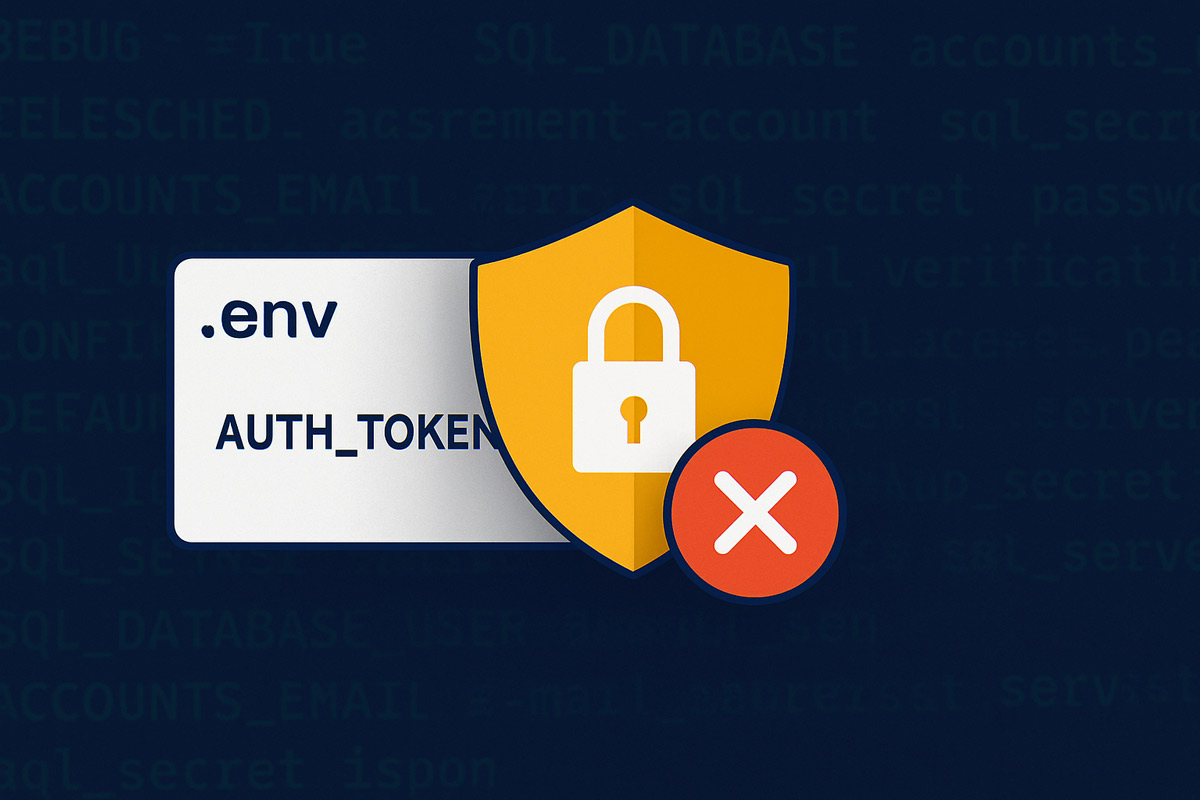
In the world of software development, efficiency and collaboration are key. Developers often rely on various tools, services, and private packages that require authentication. While convenient, the way these authentication tokens are managed can introduce significant security vulnerabilities if not handled with extreme care.
At YAS Global, we constantly emphasize robust security practices, and a recent observation highlighted a critical area: the exposure of premium service authentication tokens within version-controlled repositories.
Understanding the Vulnerability: What’s the Risk?
An authentication token, in this context, is a secret key that grants access to a private or premium service. For example, a token for a specialized icon library might allow access to its premium assets, tools, and services, which are otherwise paid.
The vulnerability arises when such a token is inadvertently committed directly into a public or even a private, but widely accessible, source code repository. Configuration files, like .npmrc (used by Node Package Manager), are common culprits, as they often contain registry authentication details. When these repositories are forked, cloned, or made public, the secret is exposed to anyone who can access the code.
Impacts of Exposure:
The consequences of exposing such a token can be significant:
- Unauthorized Access to Premium Services: The most immediate impact is that anyone with the token can access and utilize premium services without a legitimate license. This could include downloading paid assets, using advanced features, or accessing exclusive content.
- Financial Liability: The organization or individual whose credentials are exposed could face financial liability, as they are essentially paying for services being used by unauthorized parties. This can lead to unexpected billing or even legal issues with the service provider.
- Abuse and Misuse: Unauthorized users might abuse the service, potentially exceeding rate limits, causing service disruptions, or even using the premium assets for malicious purposes, leading to reputational damage for the legitimate owner.
- Supply Chain Risks: If the exposed token is used to access package registries, it could potentially be leveraged in more sophisticated supply chain attacks, though this is less common for simple asset tokens.
- Reputational Damage: Discovering that an organization’s secrets management is flawed can erode trust among clients, partners, and the wider developer community.
Use Cases: How These Keys Are Used
Keys found in files like .npmrc are typically used by package managers to authenticate against private package registries. For instance, if a project uses a premium JavaScript library or a private component, the .npmrc file might contain a line like:
@privatescope:registry=https://private.registry.com/ //private.registry.com/:_authToken=npm_YOUR_SECRET_TOKEN_HERE
This token tells npm or yarn how to authenticate when trying to download packages from private.registry.com. If this file is committed with the actual token, the secret is out.
Solutions and Best Practices for Secure Token Management
Preventing such vulnerabilities requires a multi-layered approach to secret management:
- Environment Variables: The golden rule. Never hardcode sensitive information directly into your codebase or configuration files that are committed to version control. Instead, use environment variables. These are loaded at runtime and are not stored in the repository.
- Example: Instead of
_authToken=npm_YOUR_SECRET_TOKEN_HERE, use_authToken=${NPM_TOKEN}and setNPM_TOKENin your deployment environment.
- Example: Instead of
- Secret Management Tools: For larger projects and organizations, dedicated secret management solutions like HashiCorp Vault, AWS Secrets Manager, Azure Key Vault, or Google Secret Manager provide secure storage, access control, and auditing for all your sensitive data.
- .gitignore and .npmignore: Ensure that files containing secrets (e.g.,
.envfiles, local.npmrcfiles with tokens) are explicitly listed in your.gitignoreand.npmignorefiles. This prevents them from being accidentally committed. - Pre-commit Hooks: Implement Git pre-commit hooks (e.g., using tools like
pre-commit) that automatically scan for common patterns of secrets (like API keys, tokens, passwords) before a commit is finalized. This acts as an automated last line of defense. - Token Rotation: Regularly rotate your API keys and authentication tokens. Even if a token is accidentally exposed, rotating it frequently minimizes the window of vulnerability.
- Least Privilege Principle: Ensure that any token or credential only has the minimum necessary permissions required for its function. If a token only needs read access, don’t give it write access.
- Security Audits and Scanners: Integrate automated secret scanning tools (e.g., GitGuardian, Trufflehog) into your CI/CD pipeline and regularly scan your repositories for exposed secrets.
Conclusion
The security of your software supply chain begins with robust secret management. While the convenience of embedding tokens directly might be tempting, the risks far outweigh the benefits. By adopting best practices like environment variables, dedicated secret management tools, and automated scanning, developers can significantly reduce the attack surface and protect their projects and organizations from critical vulnerabilities.
At YAS Global, we are committed to building secure and resilient applications. Understanding and mitigating risks like exposed authentication tokens is a core part of our development philosophy.